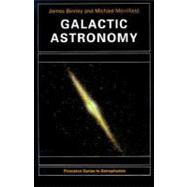
Note: Supplemental materials are not guaranteed with Rental or Used book purchases.
Purchase Benefits
What is included with this book?
| Preface | p. 1 |
| Galaxies: an overview | |
| Introduction | p. 1 |
| A brief history of galactic astronomy | p. 2 |
| Photometric models of the Milky Way | p. 5 |
| The nature of the spiral nebulae | p. 0 |
| Kinematic models of the Milky Way | p. 15 |
| Stellar populations | p. 20 |
| More recent developments | p. 212 Astronom |
| Positions, motions and coordinate systems | p. 27 |
| The equatorial system | p. 27 |
| Galactic coordinates | p. 30 |
| Parallax | p. 31 |
| Proper motions | p. 34 |
| Precession and nutation | p. 35 |
| Astrometric systems | p. 37 |
| Distances determined from velocities | p. 38 |
| Radial velocities | p. 39 |
| Distances from the movingcluster method | p. 40 |
| Secular parallaxes | p. 42 |
| Statistical parallaxes | p. 45 |
| Magnitudes and colors | p. 46 |
| Apparent magnitudes | p. 47 |
| Colors | p. 52 |
| Absolute magnitudes | p. 56 |
| Absolute energy distributions | |
| and bolometric magnitudes | p. 58 |
| Mass-to-light ratios | |
| Surface brightness and isophotal radii | |
| Gravitational lensing | p. 62 |
| Archival data and catalogs | p. 67 |
| On-line resources | p. 71 |
| Problems | p. 743 The Prop |
| The masses of stars | p. 76 |
| The Mass of the Sun | p. 77 |
| Masses of binary stars | p. 78 |
| Visual binaries | p. 78 |
| Spectroscopic binaries | p. 79 |
| The radii of stars | p. 82 |
| Phase interferometry | p. 82 |
| Intensity interferometry | p. 83 |
| Speckle interferometry | p. 83 |
| Lunar occultations | p. 84 |
| Eclipsing binaries | p. 84 |
| Astrophysical estimates | p. 86 |
| Classification of stars | p. 87 |
| Novae | p. 87 |
| Pulsars | p. 87 |
| Classification of stellar spectra | p. 88 |
| The MK system | p. 90 |
| Physical interpretation of stellar spectra | p. 94 |
| Color-magnitude diagrams | p. 102 |
| Observed Cm-diagrams | p. 103 |
| Luminosity and color as functions of spectral class | p. 104 |
| The physical properties of stars on the MS and RGB | p. 109 |
| The stellar luminosity function | p. 109 |
| Malmquist bias | p. 111 |
| Lutz-Kelker Bias | p. 115 |
| The general luminosity function | p. 119 |
| Cluster luminosity functions | p. 119 |
| Photometrically complete surveys | p. 119 |
| Proper-motion selected surveys | p. 20 |
| The luminosity function of a given MK spectral class | p. 127 |
| Catalogs of the nearby stars | p. 130 |
| Interstellar dust | p. 131 |
| Extinction and reddening | p. 133 |
| Reddening-free indices | p. 138 |
| Polarization of starlight by dust | p. 140 |
| Extinction of sightlines out of the Galaxy | p. 140 |
| Problems | p. 1434 Morphol |
| Morphological classification of galaxies | p. 146 |
| The Hubble sequence | p. 149 |
| Effects of environment | p. 157 |
| The galaxy luminosity function | p. 162 |
| The field galaxy luminosity function | p. 162 |
| The cluster galaxy luminosity function | p. 165 |
| The luminosity function divided by morphological type | p. 167 |
| The Local Group | p. 169 |
| Surface Photometry of Galaxies | p. 172 |
| The night sky | p. 173 |
| Effect of seeing | p. 176 |
| Deprojecting galaxy images | p. 179 |
| Photometry of Elliptical Galaxies | p. 85 |
| Radial surface-brightness profiles of elliptical galaxies | p. 185 |
| Table of Contents provided by Publisher. All Rights Reserved. |
The New copy of this book will include any supplemental materials advertised. Please check the title of the book to determine if it should include any access cards, study guides, lab manuals, CDs, etc.
The Used, Rental and eBook copies of this book are not guaranteed to include any supplemental materials. Typically, only the book itself is included. This is true even if the title states it includes any access cards, study guides, lab manuals, CDs, etc.